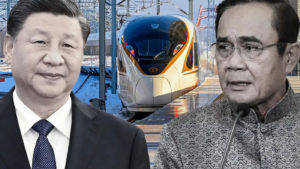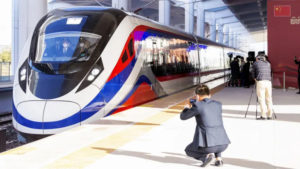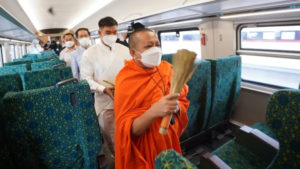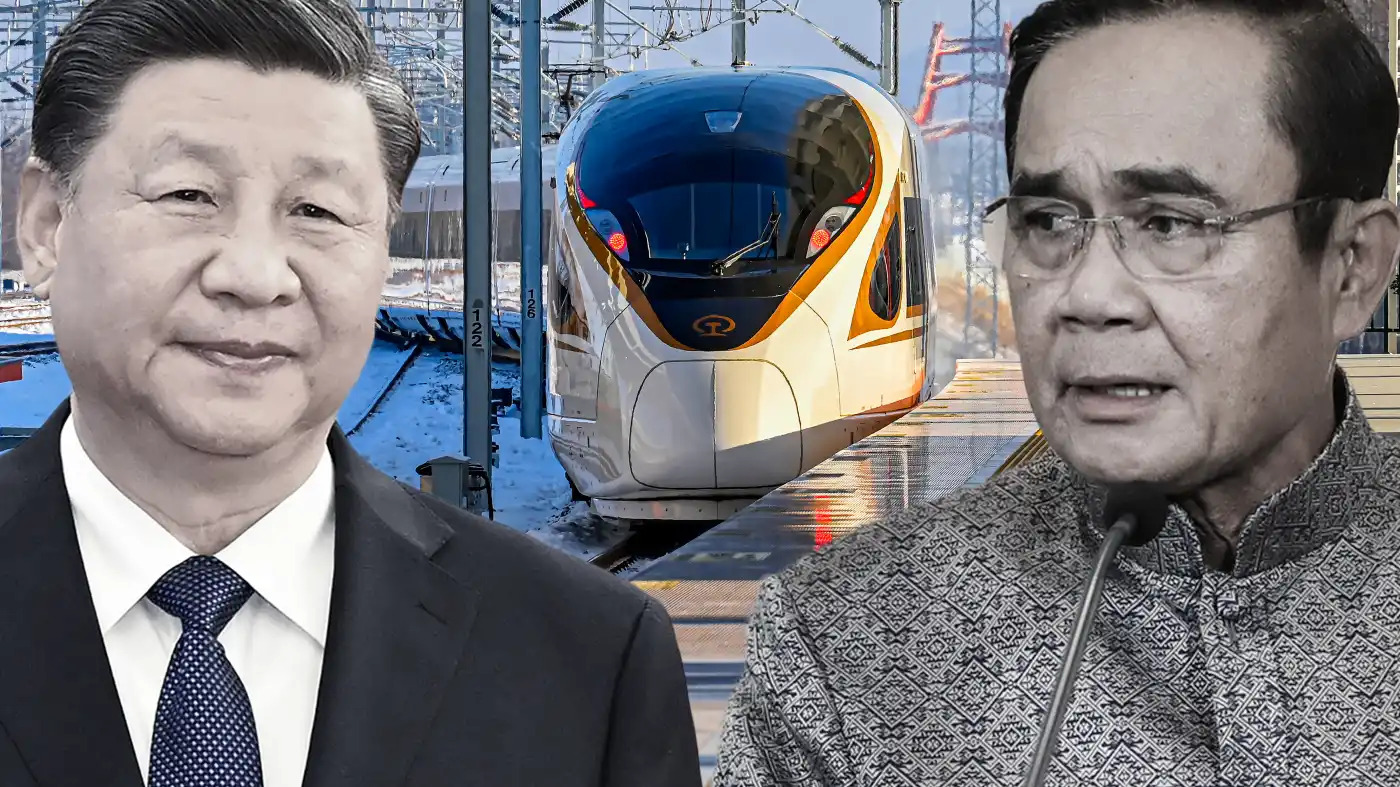
China’s pan-Asian railway sputters to a halt in Thailand
Bangkok’s indifference to Beijing’s plan creates gap in Belt and Road network
BANGKOK — China’s plan to build a pan-Asian railway through the Indochina region is sputtering as construction of a connection to Thailand has stalled due to deteriorating ties and both countries’ diverging priorities.
Part of Beijing’s plans for the region came to fruition in December when the China-Laos high-speed railway began operating. Beijing funded 70% of the $6 billion construction project, part of its Belt and Road Initiative. It has also extended loans to Laos to cover the rest. So far, it is believed that Laos has shelled out not much more than $100 million.
Everything needed to build and operate the railway line, from design and construction to rolling stocks, signal systems and operational management expertise, was provided by China.
Laos has long struggled economically, being the only landlocked country in Southeast Asia. China has dangled the prospect of economic growth under its Belt and Road Initiative to get Laos onboard with its plans.
The rail project was first announced in 2010, and began to take a clear shape after Beijing in 2013 unveiled its plan to connect Kunming in Yunnan to Singapore by rail. Construction in Laos started in 2016.
China has been keen to play the leading role in the building of a railway network in Southeast Asia. Its principal aim is to secure a land transport route that can serve as an alternative to marine shipping routes that pass through the South China Sea and the Malacca Straits.
For this strategy to work, China needs Thailand to cooperate as the railway line has to go through the country to reach Malaysia and Singapore. Some experts in Thailand are clamoring for quick government action to connect Thailand and Laos with a high-speed railway line, but the government has been less keen.
Ideally, China wants to build a 608 km rail link that connects Bangkok with Nong Khai Province, which is across the Mekong River from Vientiane. This line was designed for trains to carry passengers and cargoes at a maximum speed of 180 kph. To this end, Beijing had secured an agreement with Bangkok in 2015. The Thai government at that time was also keen to make the relationship work.

Under initial plans, China was committed to provide funds to a newly established joint Chinese-Thai venture to complete the link in 2020, ahead of the China-Laos line. But by the time construction began in 2017, Thailand had drastically changed the plans for the project.
Bangkok felt it had reasons to be cautious about embracing China’s vision.
This was because of what Bangkok considered to be unreasonable demands from Beijing, including the terms of its loans and the requirement that Chinese materials and workers be used for the construction. China also wanted the right to develop areas along the railway line.
Those demands ruffled Bangkok’s feathers and the project was cut by about 60% to become a 253 km railway line between Bangkok and Nakhon Ratchasima Province. It was also redesigned as a high-speed line only for passengers at a maximum speed of 250 kph.
The plan to set up a Chinese-Thai joint venture was also scrapped as it was decided that Thailand will bear entirely the total construction cost of 170 billion baht ($5 billion).
These changes sharply reduced China’s role in the project. Under the new blueprint, Thailand will finance, build and operate the railway line on its own, while designs and systems for the high-speed train services will be provided by China.
Since then, the project has been proceeding at a glacial pace.
Four years later, only 4% of the work to build the Bangkok-Nakhon Ratchasima section, which the Thai government considers as the first phase, has been completed. Ground leveling has been done only for 3.5 km of the railway tracks near Nakhon Ratchasima.

The Thai government will continue considering a plan to extend the line to Nong Khai in the second phase of the project. It has finished designing the second section on its own, but the specifics of the plan, including how to raise the necessary funds, have yet to be worked out.
Thailand is uncertain about extending the high-speed railway line to the border of Laos through a project that is essentially Beijing’s which also requires it to pay for the installation of Chinese systems in addition to other costs.
This is particularly the case when Thailand already has a railway link with Laos. Its Northeastern Line connects Bangkok with Nong Khai. An extension into Laos, a 3.5 km railway track between Nong Khai and Thanaleng, just some 20 km west of Vientiane, was completed in March 2009. Cargo operations started in 2019.
Rail is not the mainstream form of public transport in Thailand, although the government has plans to double its rail tracks to expand capacity. Rail accounts for only 20% of passenger traffic and 2% of cargo transport now.
Under its initial plans with China, Bangkok thought that building a high-speed line between Bangkok and Nakhon Ratchasima will help it to reduce passengers on its Northeastern Line and carry more cargo.
But Thailand does not necessarily need a high-speed link between Nakhon Ratchasima and Nong Khai, as passenger transit along this route matters little to the country. Without it, China’s Belt and Road Initiative will feature a big gap.
Thailand is also dragging its feet because high-speed rail services for passengers is already commercially viable without a link between Nong Khai and Nakhon Ratchasima, which is close to two national parks including Khao Yai, a popular summer resort. Demand for rail services to Nong Khai will not be large given that there are many budget airlines that fly there from Bangkok and southern China.
Underlying these practical considerations, a loss of trust in the Chinese has also affected how Thailand views the whole project. The bilateral cooperation was initiated by Thailand after the military coup in 2014, which provoked a wave of criticism among Western democracies and Japan.
To fend off pressure from the West, Bangkok invited Beijing to help its efforts to expand its rail network. But since construction for the first phase of the project began, Thai officials and company executives have claimed that Chinese supervisors have been difficult to work with.
For now, as Beijing needs Thai cooperation for it to realize its Belt and Road Initiative, Bangkok can afford to take its time.
Source: https://asia.nikkei.com/Economy/China-s-pan-Asian-railway-sputters-to-a-halt-in-Thailand


